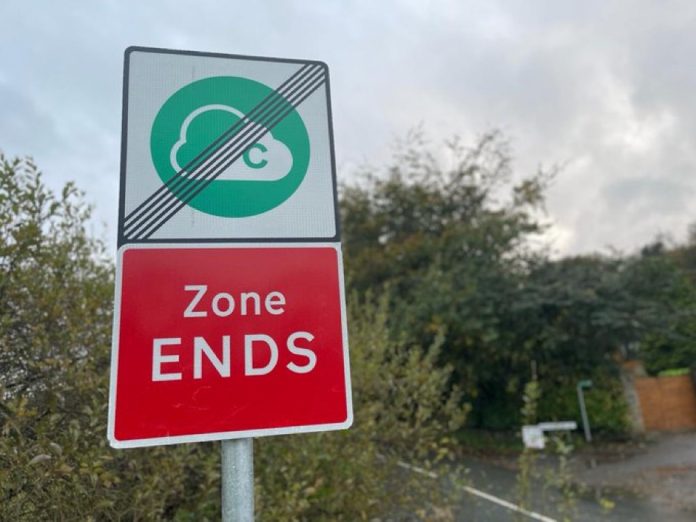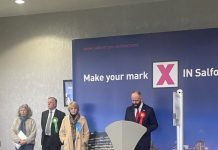Greater Manchester can bring air quality within legal limits without the need for – and faster than – a charging Clean Air Zone, new modelling shows.
Plans for a clean air zone were first brought in nearly two years ago but were dropped following a massive outcry and the Government’s refusal to subsidise the scheme.
Andy Burnham told this morning’s press conference that the old CAZ plan wasn’t able to “take people with it”, leading to a “pause” in the scheme last year
However now the region is ready to submit what it calls a ‘compelling’ plan for clean air through £86.7m investment in transformational Bee Network, taxi upgrades and traffic flow measures
Building on the transformational Bee Network, and using clean air funding already awarded by government, Greater Manchester’s proposal includes a £51.2m investment in zero-emission electric buses for the Bee Network, £30.5m to fund grants for cleaner taxis, and £5m for measures to manage traffic flow on some roads in the centre of Manchester and Salford.
Greater Manchester’s 10 local authorities are legally directed by government to bring nitrogen dioxide within legal limits as soon as possible and by 2026 at the latest, and are preparing to submit evidence to government in December in support of their preferred investment-led, non-charging plan, benchmarked against a charging Clean Air Zone in the centre of Manchester and Salford.
Greater Manchester’s preferred plan would mean that no vehicle would be charged to drive in a Clean Air Zone in Greater Manchester. Modelling shows this would bring air quality within legal limits for nitrogen dioxide on local roads in 2025.
Modelling of a charging Clean Air Zone in the centre of Manchester and Salford shows it would not achieve compliance by 2026, failing to meet the government’s own compliance date.
It is for government to decide the measures that get the green light – Greater Manchester’s preferred investment-led, non-charging plan, or a charging Clean Air Zone.
Mayor of Greater Manchester, Andy Burnham, said:
“Cleaning up the air that people breathe is a priority for Greater Manchester and we have already started to do that through investment in the Bee Network, which saw the first buses brought back under local control in September.
“By accelerating investment in the Bee Network to create a London-style integrated public transport network, and upgrading GM-licensed taxis, we can improve air quality faster than if we introduced a Clean Air Zone, and without causing hardship to our residents or businesses.
“Since the first bus services came under local control, we have listened to feedback to make improvements and deliver change and are already seeing the benefits the Bee Network brings, with more people getting on board with lower fares under a locally controlled service, with new, state-of-the-art electric buses.
“I’d also ask government to urgently consider allowing Greater Manchester local authorities to remove charging Clean Air Zone signs, as modelling shows that only Greater Manchester’s investment-led plan can meet the legal test placed on the 10 councils to deliver compliance in the shortest possible time and by 2026 at the latest.”
Leader of Bury Council and Clean Air lead for Greater Manchester, Cllr Eamonn O’Brien, said:
“We know that there are very serious consequences of dirty air in Greater Manchester and that the health impacts are not always felt equally.
“We want to do the right thing in the right way, using an investment-led, non-charging plan to clean the air in a supportive and transitional way, that does not create the risk of financial hardship. While we can now prove our case for an investment-led plan, modelling shows that we can’t achieve compliance through a charging Clean Air Zone by 2026. There is now a compelling case for what Greater Manchester has set out – a plan that is fairer, cheaper, more affordable and more democratic.
“Subject to the approval of the Greater Manchester Air Quality Administration Committee at its meeting on 20 December, this evidence will be submitted to government. It is then for government to determine which scenario Greater Manchester is to implement – an investment-led, non-charging plan, or a charging regional centre Clean Air Zone.”







